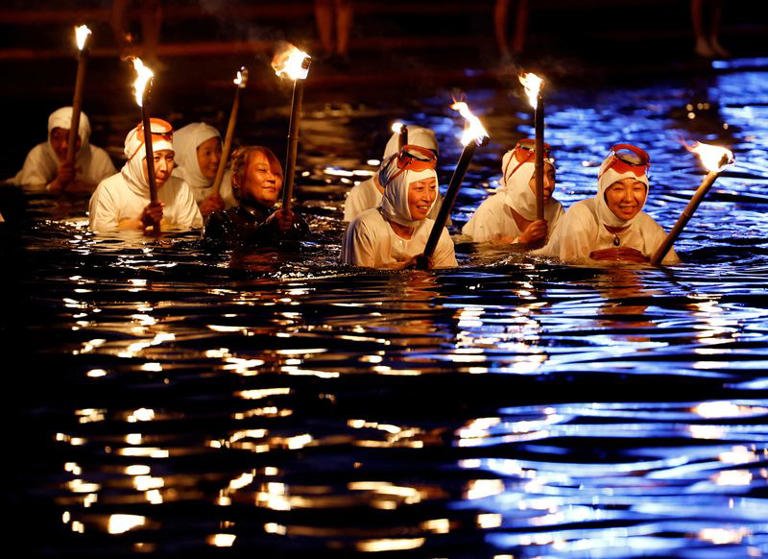Bearing torches that illuminated the night, Japan’s revered “ama” divers performed a ceremonial swim into the ocean, praying for an abundant catch. This tradition, held for decades by these female free divers, is now at risk as age and dwindling interest reduce the number of women willing to sustain this way of life in the fishing community of Minamiboso on the Pacific coast. This year, most of the 80 participants in the weekend event were volunteers, highlighting the challenges faced by this ancient practice.
Japan, known for having the world’s oldest population, has seen a significant decline in the number of female ama—meaning sea-diving fisherpeople—in recent years. In the Shirahama district of Minamiboso, the number of active ama fell to just 40 last year, a 70% decrease from 2006, according to a local fisheries cooperative. The average age of these divers was 72 in 2023, compared to 68 in 2006.
“Those who still go out to sea are getting rather old. We have managed to keep the festival going by asking people in this area and beyond for cooperation,” said Shoichi Iida, who has been involved in organizing the festival for years. In keeping with their centuries-old tradition, the ama dive without any scuba gear or air tanks, relying solely on their skill and endurance. Despite the cultural significance, many divers find the work arduous and not particularly lucrative, leading to a steady decline in numbers as fewer young women are drawn to the profession.
“This is not the kind of job on which you can make instant money,” said Yoshino Hirano, who has been an ama for 16 years. Despite these challenges, some still find a deep connection to the tradition. Ayumi Inoue, a 51-year-old local resident, decided to train as an ama three years ago. “I grew up seeing older women working as ama, and found the smiles on their suntanned faces very attractive and cool,” Inoue said. “Seeing the number of ama divers dwindling, to be honest, makes me sad.”
Efforts to preserve this cultural heritage are ongoing, but the future of the ama tradition remains uncertain. The community continues to seek ways to maintain the practice, inviting volunteers and promoting the cultural and historical significance of the ama. However, as the current generation of divers ages, the sustainability of this way of life faces significant challenges.
In Minamiboso, the torch-lit ceremony serves as a poignant reminder of the ama’s enduring legacy and the pressing need to safeguard this unique aspect of Japan’s cultural heritage. The community’s dedication to preserving the tradition highlights both the resilience and the fragility of cultural practices in the face of modern challenges.
READ MORE:
